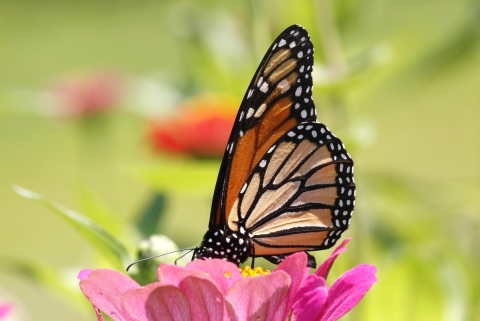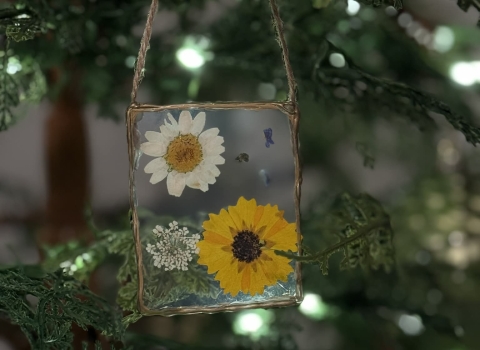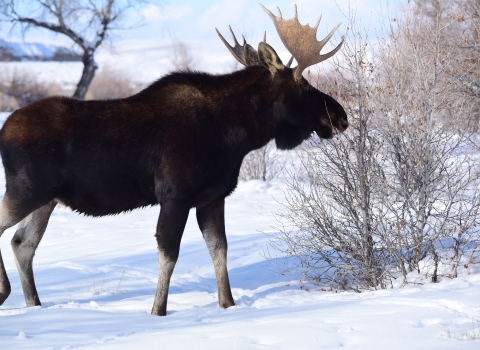At national wildlife refuges along the monarch migration trail, excitement builds early. Every fall, monarch butterflies fly thousands of miles from as far north as Canada to overwinter in Mexico. When swarms of monarchs pause en route to rest and feed on nectar-bearing plants, admirers will be ready to see them blanket trees and shrubs in orange and black.
Here are some prime viewing spots in five states. All events are free.
Florida
People start calling St. Marks National Wildlife Refuge as early as August to ask when the monarch butterflies are coming. The refuge is the last refueling stop for thousands of migrating monarchs before they fly over the open water of the Gulf of Mexico.
Virginia
Each year during monarch season (from early September to late October), the Coastal Virginia Wildlife Observatory counts and tags monarchs at Eastern Shore of Virginia National Wildlife Refuge, at the tip of the Delmarva Peninsula between the Atlantic Ocean and Chesapeake Bay. Visitors are welcome to watch. Taggers record monarch size, condition and gender.
Texas
In late September/early October, when conditions are favorable, thousands of monarchs a day may flutter through the prairies and oak savannas of Balcones Canyonlands National Wildlife Refuge in the Hill Country of central Texas.
Kansas
The butterflies tend to come in waves, based on weather patterns. Migrating monarchs feed on asters and goldenrod and other wildflowers that bloom throughout the refuge in the central Kansas wetlands. If winds frustrate butterfly hunters, visitors can catch monarchs inside an enclosed butterfly pavilion.
During the day, look for monarchs in wildflower areas. Toward evening, the best viewing areas are sheltered places that are cool and damp. Monarchs are expected in Kansas in mid- to late September. Check out Quivira National Wildlife Refuge.
Iowa
Neal Smith National Wildlife Refuge held its first Monarch Madness Day in 2006. Ninety people caught and tagged 250 monarchs during the day; almost 500 were tagged over the season.
Through the refuge’s tallgrass prairie restoration project, thousands of acres have been planted with native plants, many of which are attractive to monarchs. Monarchs can be seen in large number along the Tallgrass Trail and along the sides of roads in the refuge. The refuge has monarchs year-round.
Frequently Asked Questions
Q: When will the butterflies arrive this year?
A: Timing depends on seasonal patterns, weather conditions and storm activity. Falling temperatures and shrinking daylight generally prompt butterflies in the northernmost states of the Lower 48 to start their migrations by late August. But a big tropical storm could set back their schedules.
Q: What are the prospects for good monarch viewing this year?
A: See Monarch Watchpredictions for when migration will peak in your area.Recent drops in the annual count of monarchs overwintering in Mexico and the size of the forest area occupied by overwintering monarch colonies don't augur well. Together with other trends, particularly the decline in milkweed habitat in the United States and Mexico, this is worrying.
Q: How do the butterflies travel south?
A: They ride a cold front, often at speeds of 10 to 30 miles per hour, covering up to 80 miles a day.
Q: Do the same butterflies return from Mexico when the winter is over?
A: Yes, but they’re on a tight time clock. Migrating monarchs live up to nine months longer than other butterflies. That gives them just time enough to fly several hundred miles north in the spring before laying eggs and dying. The next two generations proceed further north. The fourth generation begins the migratory cycle again.







